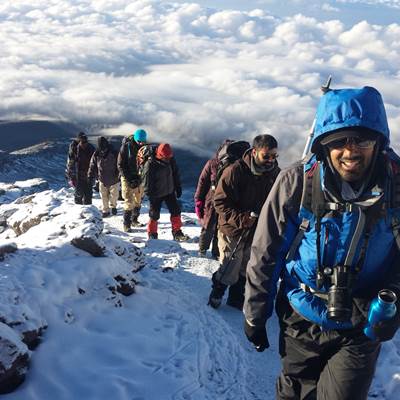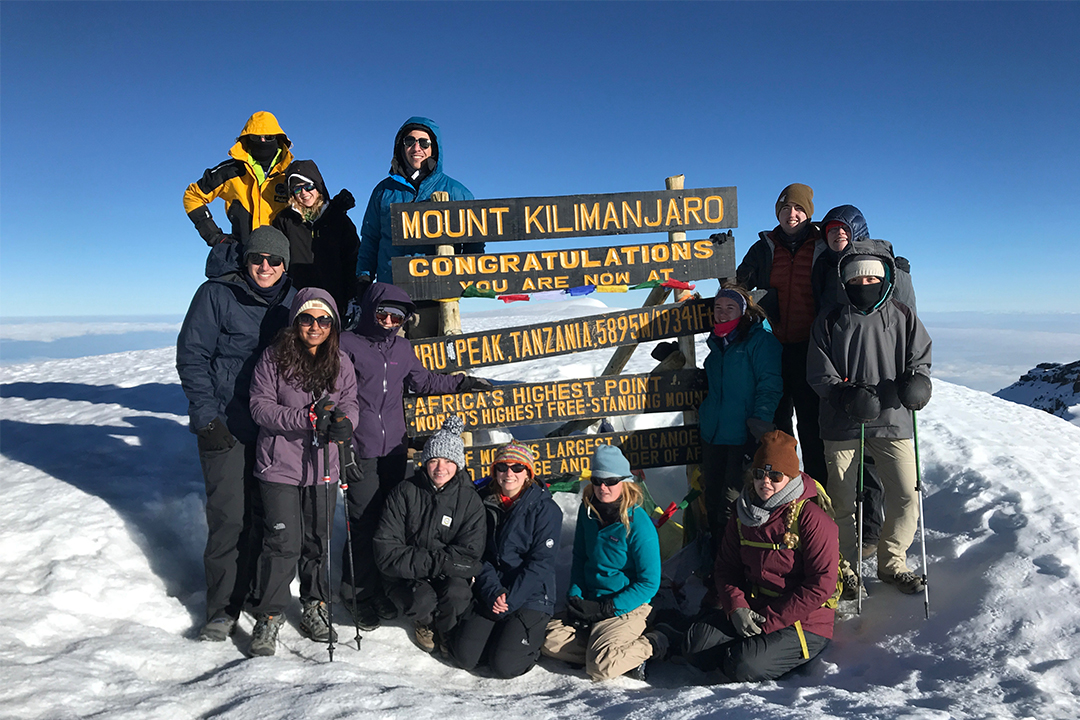Can You Hike Mount Kilimanjaro Without a Guide? You cannot climb Mount Kilimanjaro without a guide. Whether you are going for a complete Kilimanjaro climb or a day trek up the mountain, you must be accompanied by a qualified guide from a registered firm. The guide performs a variety of duties. Their top goal is your safety, but they also handle all logistics, such as paperwork, porters, and meals.

Kilimanjaro is popular among both expert hikers and first-time travelers since it is thought to be the simplest of the seven peaks. Scaling the mountain requires no technical expertise or equipment, such as a rope, harness, crampons, or ice axe.
As a result, it is considered a hiking or “walk up” summit rather than a mountaineering or climbing peak. Many people who climb Kilimanjaro have no prior trekking or backpacking expertise when they arrive. Some of the most commonly asked questions are answered below.
Why you can’t Hike Mount Kilimanjaro without a Guide?
The Kilimanjaro National Park Authority (KINAPA) enforces the mountain’s rules and regulations. Its primary goal is to keep everyone safe and to reduce the hazards associated with climbing Africa’s tallest mountain. Unsupported hikes on the mountain have been prohibited since 1991.
Why you need a Guide when hiking Kilimanjaro Mountain?
While hiking Kilimanjaro Mountain, your guide will lead the trip at a moderate pace, leaving plenty of time for pictures and acclimatization. The guide is responsible for ensuring compliance with all park laws and regulations.
When hiking to the summit, you must adhere to the established routes and sleep in designated campsites. When they arrive at the overnight camp, each trekker must sign in. This manner, everyone on the mountain is accounted for at all times.
Though climbing Mt Kilimanjaro is considered relatively straightforward, altitude sickness may affect anyone. It is the guide’s obligation to observe if somebody is struggling and to enable a guided descent away from the group if required.
What additional assistance/crew is there apart from the guide?
A typical Kilimanjaro climb is accompanied by a crew consisting of at least one guide (some organizations supply one guide for every two customers), chefs, and several porters. Your tour company organizes the staff. They will also handle the paperwork and payment of costs. Furthermore, they will offer all necessary equipment and meals.
It will be difficult to find an operator that will arrange a trip with simply a guide, although there are a few firms that provide treks with little support. On these expeditions, you would be responsible to carry the most, if not all, of your own stuff.
What are the benefits of guided hike on Kilimanjaro Mountain?
The support team is there to make your climb simpler. While your guide will be your company throughout your journey, the porters and chefs work extremely hard behind the scenes. The porters will build your camp daily before you arrive.
The chefs will begin preparing the meal. Most essential, the staff understands where to acquire water for the campsite. You don’t have to worry about any of the trip’s logistics, and you only need to bring a tiny day bag. Needless to say, summit success rates are greater on fully supported treks than on treks with less help.
Booking a specialist climb with little support will not result in a considerable savings. This type of trek is exclusively given by a few specialized operators, with limited competition. In truth, the porters’ pay account for only a small portion of the total cost of climbing Kilimanjaro. Finally, employing a few more porters is less expensive than investing in ultra-light equipment.
So, regardless of whether you are an accomplished mountain climber and believe you can hike Africa’s tallest peak unassisted, it is just not authorized. If you want an extra challenge and are confident in your physical abilities, try planning a trip with little support.
Alternatively, let the pros handle it and enjoy the fact that you won’t have to carry a big pack and that someone will prepare your meals and ensure there is enough water for drinking, cooking, and even washing. Enjoy the warm hospitality of your Tanzanian crew, who will go above and beyond to ensure that you have an unforgettable voyage.
Kilimanjaro is not just Africa’s highest peak, but also the world’s tallest free standing mountain. The summit, known as Uhuru Point, is 5,895 meters (19,341 ft) above sea level.
Most high mountains are part of ranges, such as Mount Everest’s Himalayan Mountain Range. These are generated via a process called plate tectonics. Below the earth, Earth’s crust is made up of several tectonic plates. These plates have been shifting since the beginning of time owing to geological activity.
The equator is an imaginary line that divides the Northern and Southern Hemispheres. It passes through the exact center of the Earth and divides it in half.
The equator is unique from the rest of the world due to the abundance of solar energy it receives. The tropical climate is largely constant year-round. The predominant trends here are warm and rainy or warm and dry.
Mount Kilimanjaro is located in Tanzania, barely 205 miles from the equator. When early explorers reported seeing glaciers on the peak of Kilimanjaro, many did not believe them as they felt it was impossible for ice to grow so close to the scorching, tropical sun.
To sum it all; Now roughly 30,000 people climb Kilimanjaro every year. Though unsubstantiated, it is often stated that 50% of climbers fail. This is surprising given that Kilimanjaro is not widely viewed as a particularly challenging summit in comparison to other mountains. After all, it is not a technical peak and does not take superhuman powers to scale it.


